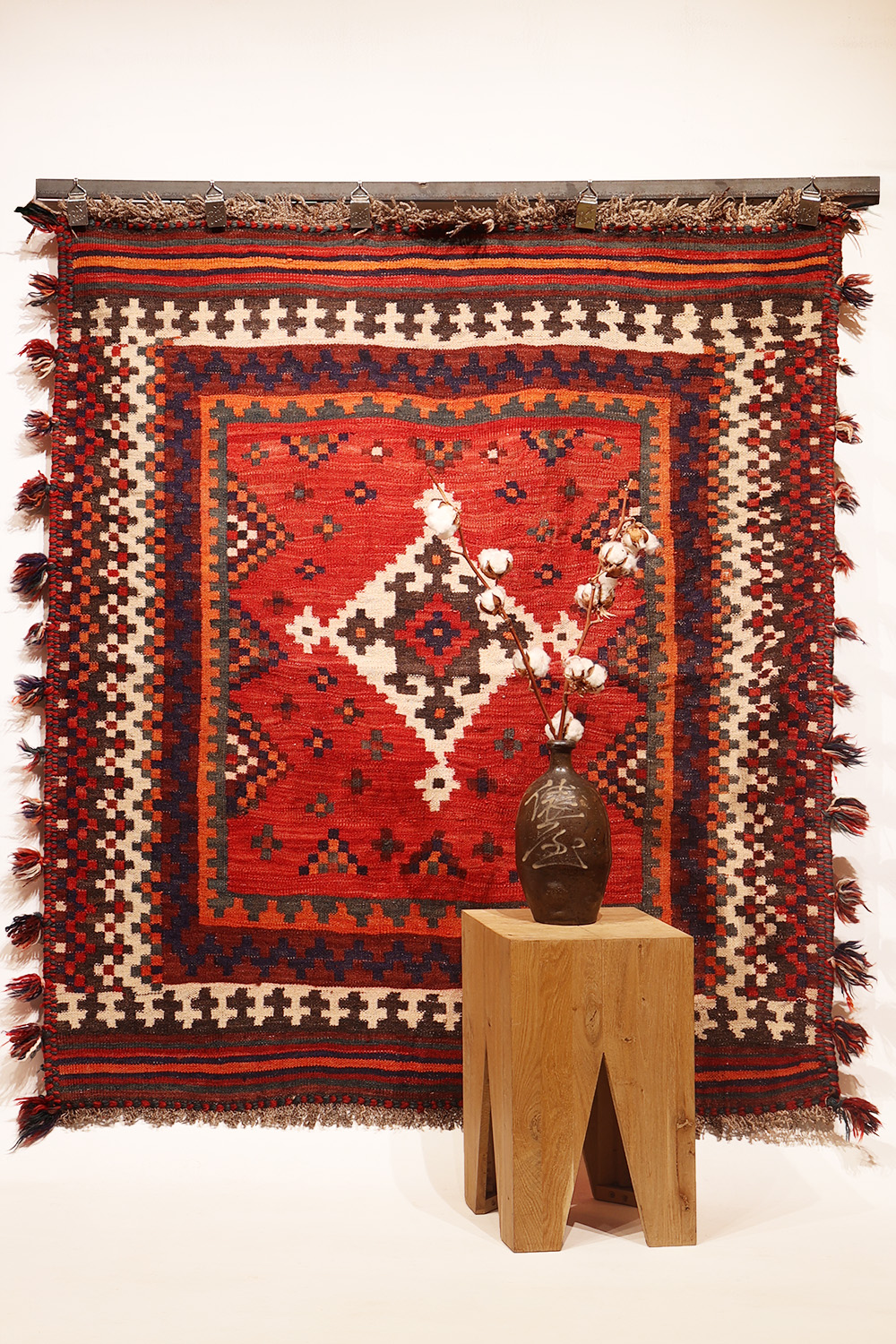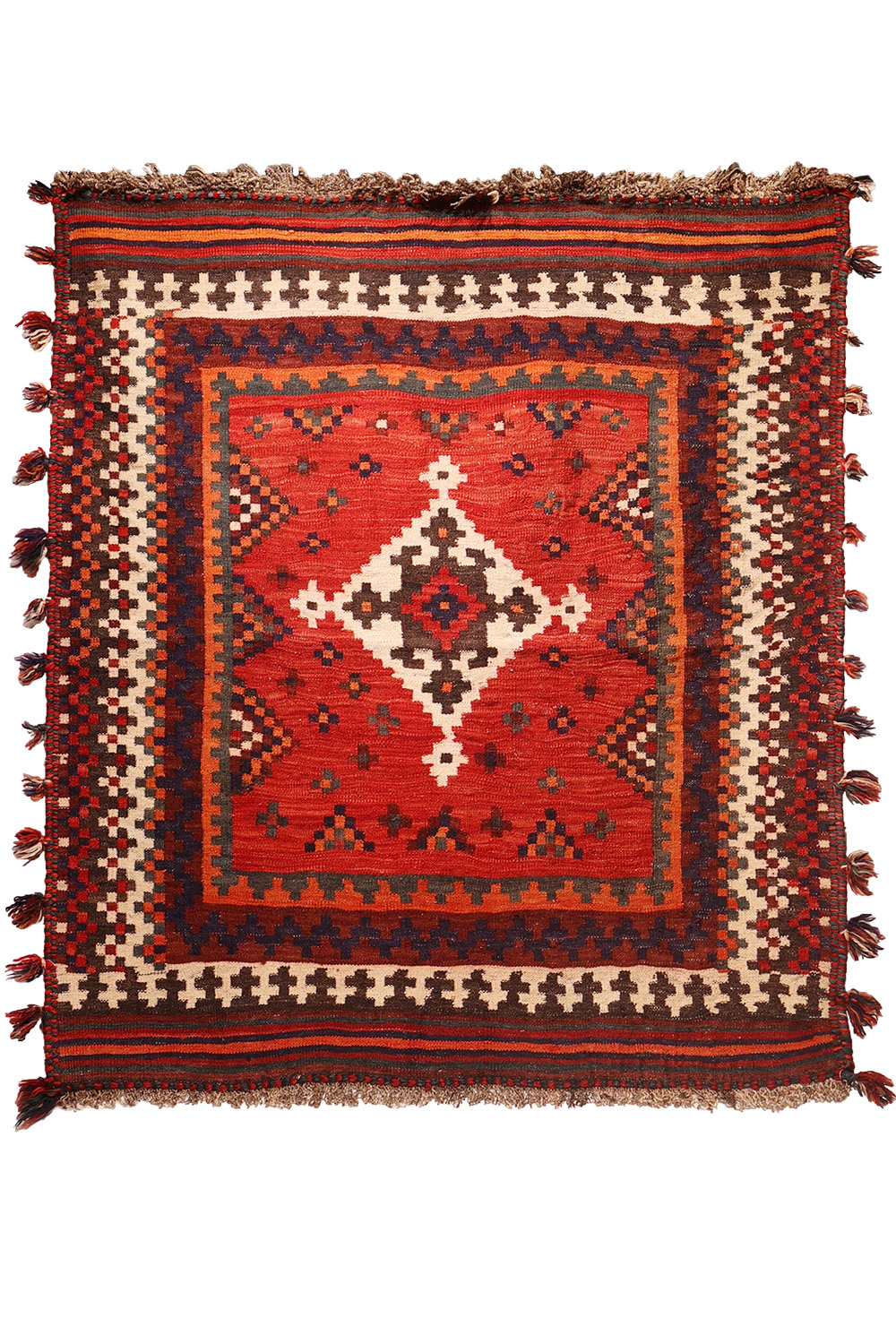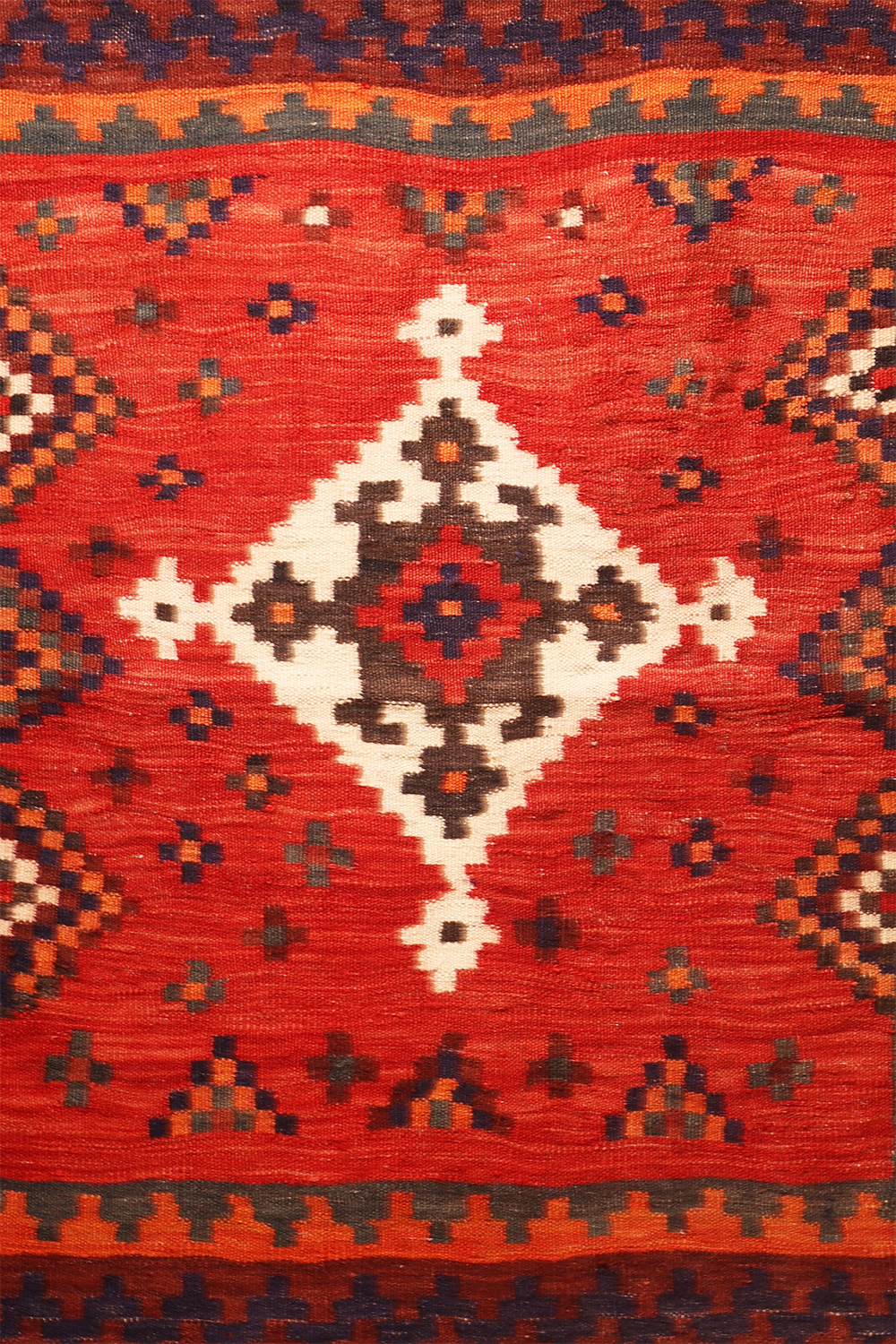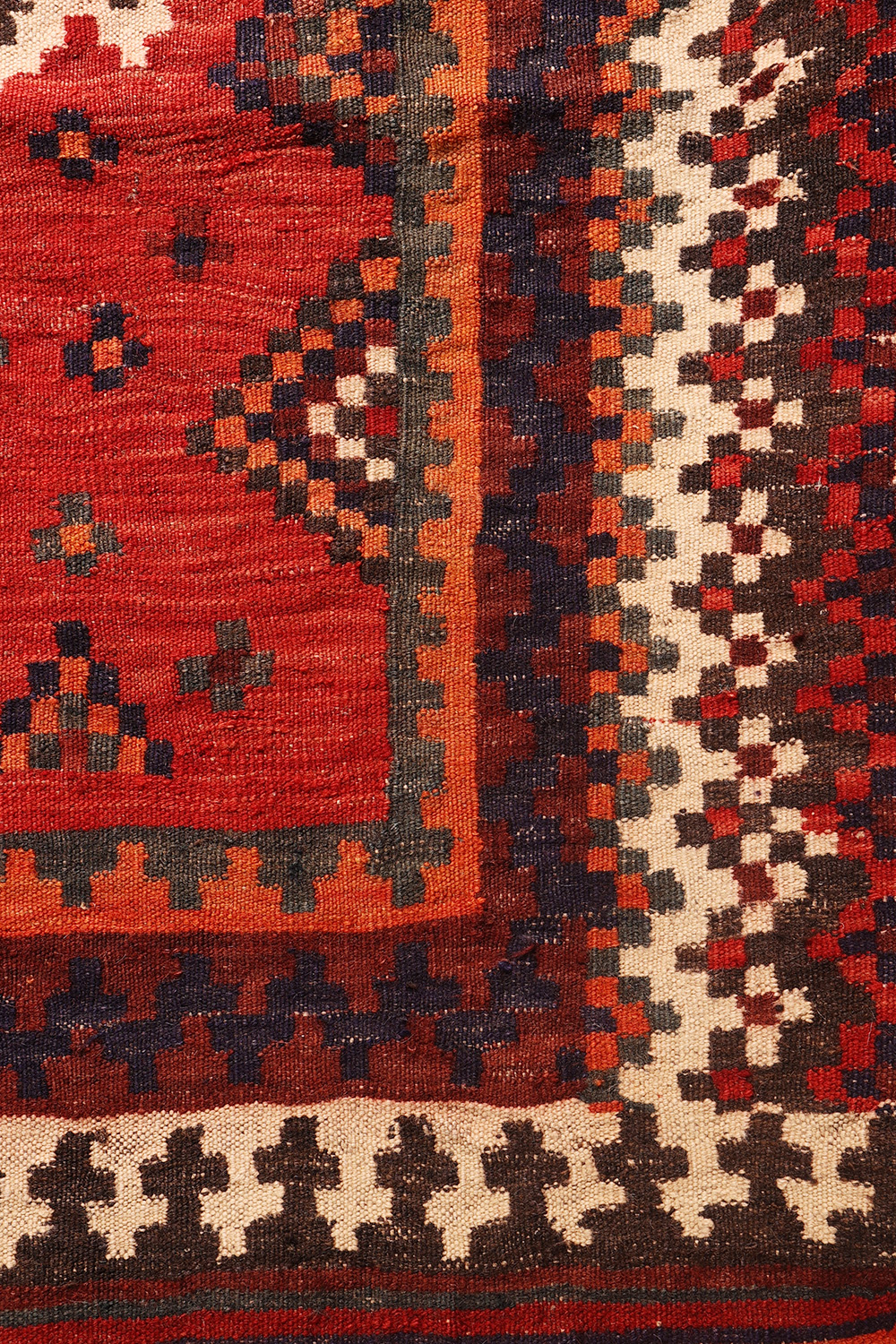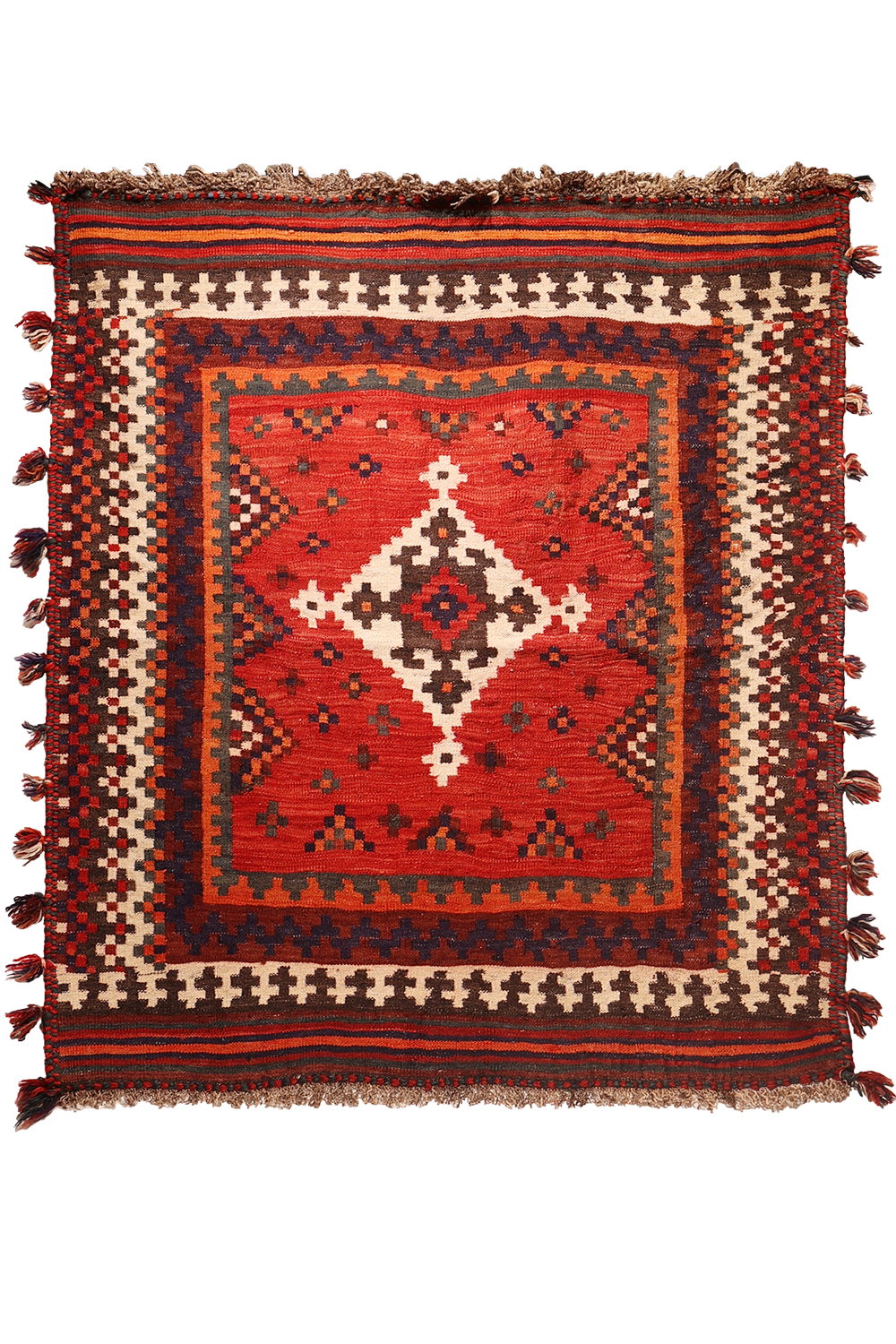350.00 €
A semi-antique Arabic sofreh, or bread-making kilim, featuring a large central medallion. Surrounding the medallion are square-shaped motifs that repeat throughout the various borders. It is to be noted the multiple borders that frame the central field. Although we wash our kilims in Iran before exporting them, this kilim has traces of flour on the back of it, a charming detail that reflects its owner’s use for making bread.
This kilim is exceptionally sturdy, making it ideal for high-traffic areas.
Material: 100% hand-spun sheep wool
Size: 145×130 cms
Origin: Arab tribes, Iran
Date of weaving: 1960s
Sofrehs take their name from the Farsi (Persian) word for cloth and are used for several functions connected with preparing and eating food. Eating cloths are normally referred to simply as sofrehs and vary enormously in size-from small, rectangular mats for personal use to extremelly long, narrow runners for communal eating. They are woven in several standard techniques, including alternating bands of kilim and pile rug, and produced by a number of nomadic and tribal weavers in Iran, Afghanistan, Central Asia and to a lesser degree, elsewhere.
Arab nomads of Fars Province, Iran, are descended from certain Arab tribes of Najd, Yammaneh and Omman who migrated in the 7th and 8th centuries following the Arab contest (640 A.D.) and the advent of Islam. They speak a corruption of Arabic and Persian.
Althoug Arab nomad piled production encompasses a great and astonishing variety of designs, with field patterns much more varied than other tribes of Fars, the Arab weaver´s adherance to a generally dark and sober palette has denied them the artistic recognition they deserve.
1 in stock
Additional information
| Weight | 4.6 kg |
|---|
Subscribe and receive the lastest news
